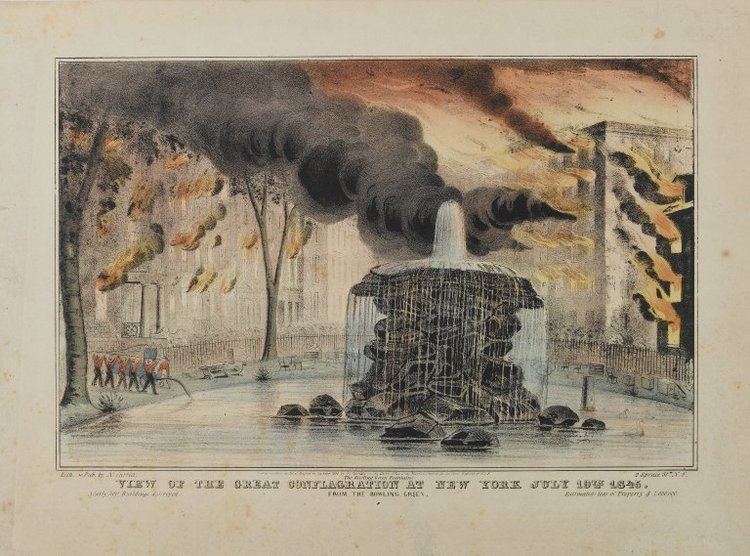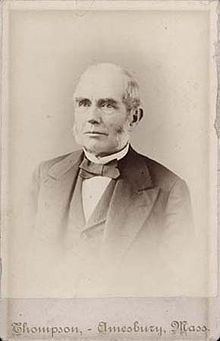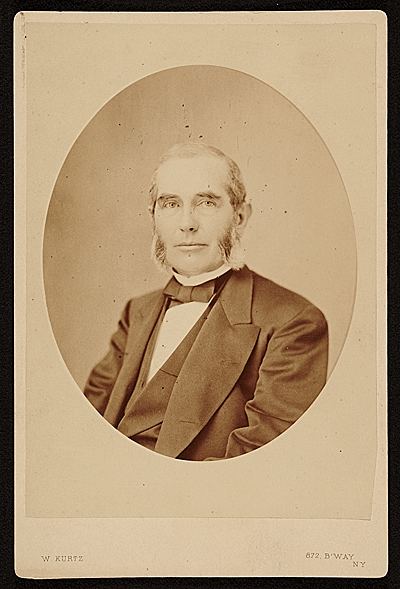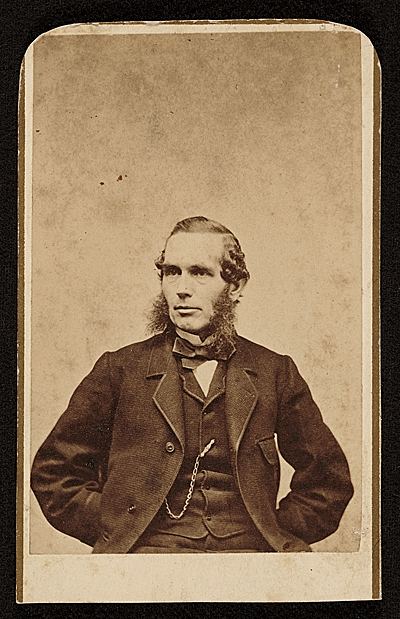Nationality American Name Nathaniel Currier | Books Hunting and Fishing | |
 | ||
Died November 20, 1888, Amesbury, Massachusetts, United States | ||
Nathaniel Currier 1840 Steam Boat Lexington Disaster Long Island Sound news print
Nathaniel Currier (March 27, 1813 – November 20, 1888) was an American lithographer, who headed the company Currier & Ives with James Ives.
Contents
- Nathaniel Currier 1840 Steam Boat Lexington Disaster Long Island Sound news print
- Currier Ives 1857 1907 Romanticism Americans
- Early years
- Currier Ives
- Personal and later life
- References

Currier & Ives 柯里爾和艾夫斯 (1857-1907) Romanticism Americans
Early years

Currier was born in Roxbury, Massachusetts, to Nathaniel and Hannah Currier. He attended public school until age fifteen, when he was apprenticed to the Boston printing firm of William and John Pendleton. The Pendletons were the first successful lithographers in the United States, lithography having only recently been invented in Europe, and Currier learned the process in their shop. He subsequently went to work for M. E. D. Brown in Philadelphia, in 1833. The following year, Currier moved to New York City, where he was to start a new business with John Pendleton. Pendleton backed out, and the new firm became Currier & Stodart, which lasted only one year. In addition to being a lithographer, he was also a New York City volunteer fireman in the 1850s. Nathaniel Currier is interred at Green-Wood Cemetery in Brooklyn, New York.
Currier & Ives

In 1835, Currier started his own lithographic business as an eponymous sole proprietorship. He initially engaged in standard lithographic business of printing sheet music, letterheads, handbills, etc. However, he soon took his work in a new direction, creating pictures of current events. In late 1835, he issued a print illustrating a recent fire in New York. Ruins of the Merchant's Exchange N.Y. after the Destructive Conflagration of Decbr 16 & 17, 1835 was published by the New York Sun, just four days after the fire, and was an early example of illustrated news. In 1840, Currier began to move away from job printing and into independent print publishing. In that year, the Sun published his print Awful Conflagration of the Steam Boat 'Lexington' in Long Island Sound on Monday Eveg Jany 13th 1840, by Which Melancholy Occurrence Over 100 Persons Perished, another documentation of a news event, three days after the disaster; the print sold thousands of copies.

In 1850, James Ives came to work for Currier's firm as bookkeeper. Ives' skills as a businessman and marketer contributed significantly to the growth of the company; in 1857 he was made a full partner, and the company became known as Currier & Ives. Although best known as creators of popular art prints, such as Christmas scenes, landscapes, or depictions of Victorian urban sophistication, Currier & Ives also produced political cartoons and banners, significant historical scenes, and further illustrations of current events. Over the decades, the firm created roughly 7,500 different images.
Personal and later life
Nathaniel Currier was a Unitarian who first married Eliza West Farnsworth. The couple had one child, Edward West Currier. In 1847, after Eliza's death, he married Lura Ormsbee.
Currier was a friend of P.T. Barnum of Barnum and Bailey fame.
Currier was fond of fast horses, and several were kept at his Massachusetts residence in a barn he purchased, ordered dismantled, and had delivered by horse to his estate.
Currier retired from his firm in 1880, and turned the business over to his son Edward. He died eight years later on November 20, 1888, at his beloved home on Lion's Mouth Road in Amesbury, Massachusetts.
